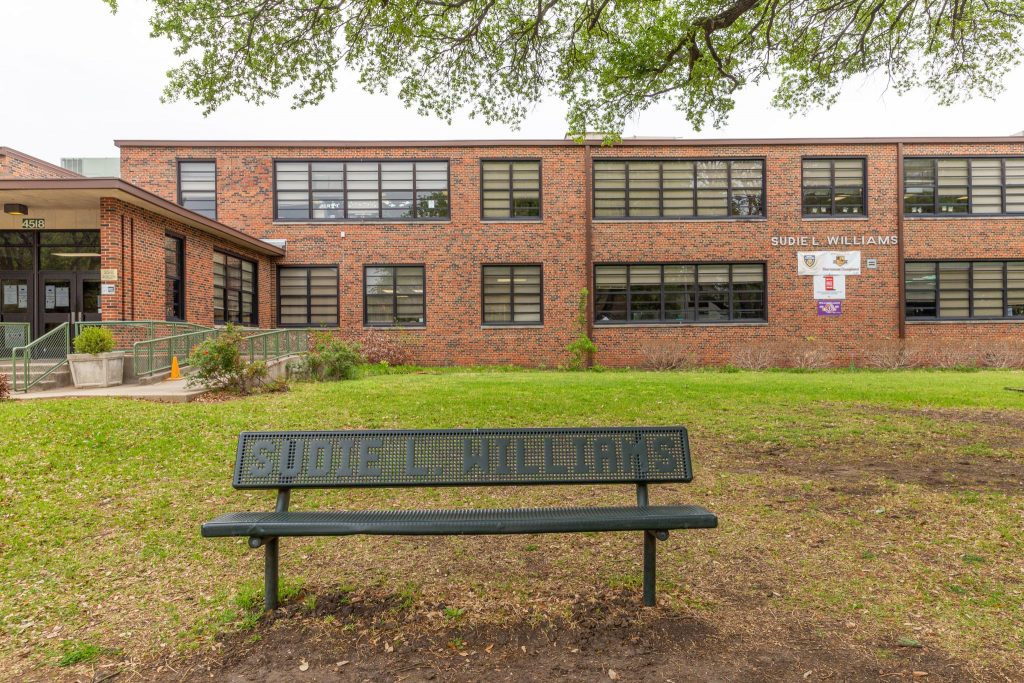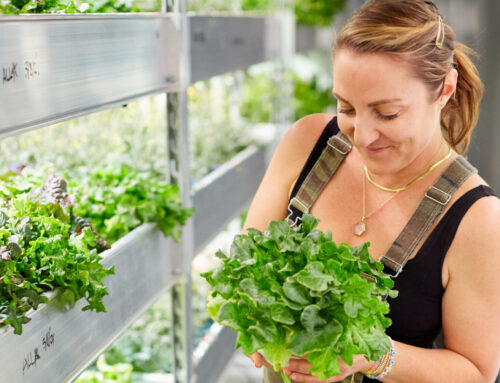
Sudie L. Williams Talented and Gifted Academy. Photo by Jessica Turner.
Illustrations by Renee Umsted.
IN 2018, DALLAS ISD OFFICIALS predicted that turning Sudie L. Williams Elementary School into Sudie L. Williams Talented and Gifted Academy (TAG) would attract more students. They were right.
Since the board of trustees approved the change, total enrollment at the school has doubled, from about 205 in the 2017-18 school year to 420 this year. At the time, community members protested the decision they perceived to be sudden, but the transition wasn’t out of character for DISD.
The district was facing a problem: wealthier white families were enrolling their children in private schools, and DISD had not figured out how to bring them back.
DISD data from 2016 shows that 850 children zoned to Williams attended private schools in the area.
Changing Williams to a magnet school has affected the student body. There was an exodus of students, when those who attended the under-enrolled elementary but didn’t test into the magnet program were rezoned to nearby K.B. Polk Elementary.
But even before Williams became a TAG school, enrollment dropped when about 60 students who lived at a nearby apartment complex had to move after their housing was torn down.
As a magnet school, Williams requires students to submit applications. Keisha Crowder-Davis, the executive director of centralized enrollment and magnet programs in the Office of Transformation and Innovation (OTI), says 30% of the seats are awarded by merit, and the remaining 70% of seats are allotted by feeder pattern.
Working with the Racial Equity Office, the OTI has formulated a plan to encourage African American students and English-language learners throughout the district, including in the Lincoln, Madison, Roosevelt, Carter and South Oak Cliff feeder patterns, to apply to magnet programs. Students who meet the eligibility to apply are informed of their status by mail and by personnel at their schools. They are also assigned mentors to help with the application process.
Though the district may be working to get more students to apply, there is still a disconnect. Newer classes at Williams don’t look the same as the older grades.
Source: Dallas ISD
Right now, 53.4% of fourth-graders – the youngest students at Williams – are white, and only 27% of eighth-graders are white. This statistic doesn’t carry over to the oldest class. About 32% of fourth-graders are Hispanic, compared to 60.8% of eighth-graders.
Applicant data reveals more about the trajectory of the school’s population. Of the applicants for the 2018-19 school year at Williams, more than half of the fourth-graders identified as white and only about 30% listed their ethnicity as Hispanic. But among sixth-grade applicants, more than 60% of students identified as Hispanic and about 16% of applicants identified as white.
“One of the things we are trying to solve for is why can’t we get certain students to apply to certain schools,” Crowder-Davis says.
The district plans to have conversations with families about why they aren’t applying to different programs, including Williams, after the second round of the application process, Crowder-Davis says.
Source: Dallas ISD
The student body at Williams seems to be becoming less diverse in terms of race and ethnicity, and in terms of economic status. In the 2018-19 school year, 86% of all DISD students were classified as economically disadvantaged, a Texas-specific term that includes individuals who receive free or reduced-price lunches as well as other indicators of family need.
White students made up 5% of the total DISD population, and 63% of them lived in a lower-poverty neighborhood. Hispanic students, on the other hand, made up 71% of all DISD students, but only 19% lived in a lower-poverty neighborhood.
This year at Williams, 15.9% of fourth-graders are categorized as economically disadvantaged, but 52.7% of eighth-graders are categorized as economically disadvantaged.
DISD doesn’t know why the applicant pool at Williams is lacking diversity, even after staff members have tried to streamline the application process and make access equitable and fair, including by ensuring the selection committee itself was diverse.
“Is there anything that can be done at Williams to try to encourage more students of color or economically disadvantaged students to apply?” Crowder-Davis says. “That’s the ongoing initiative that we are really, really working on.”






